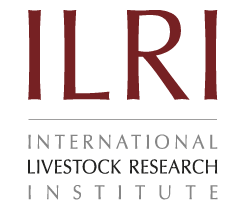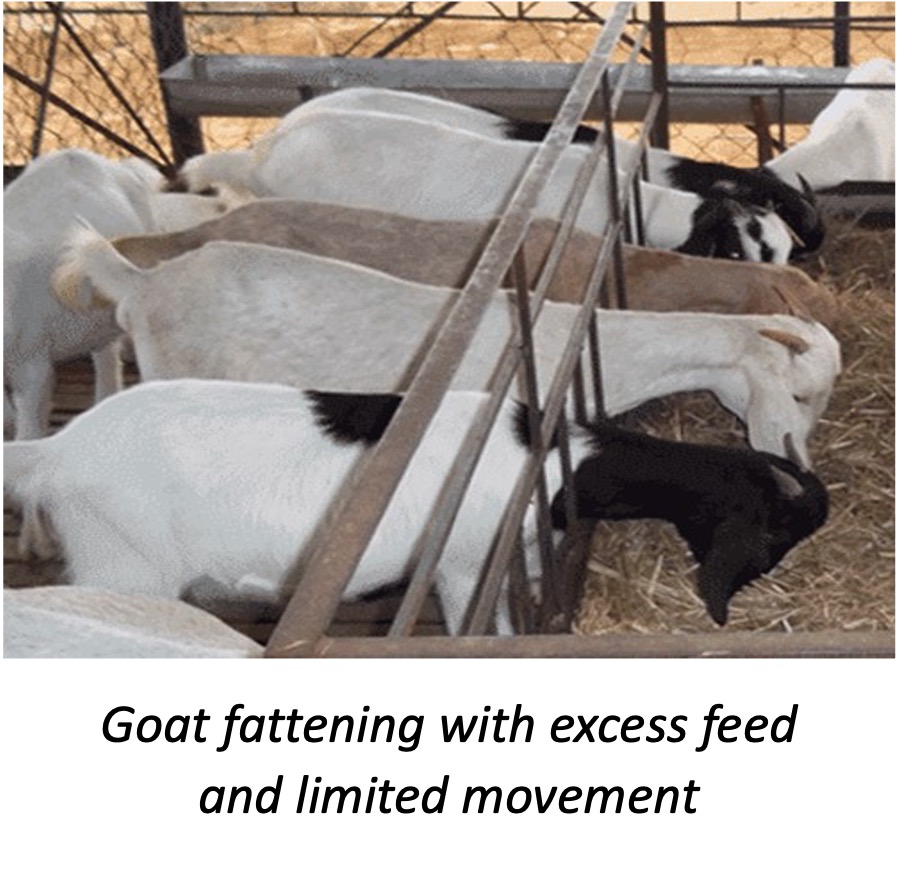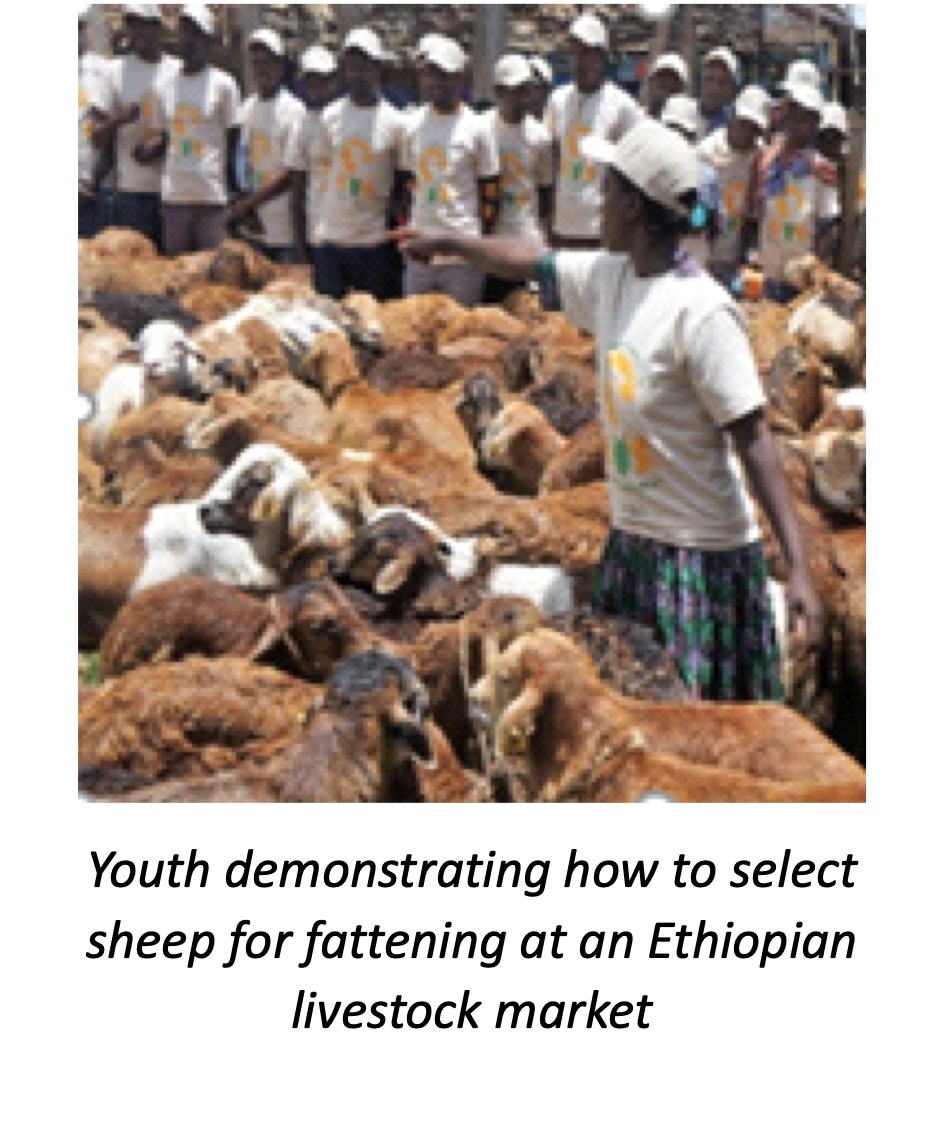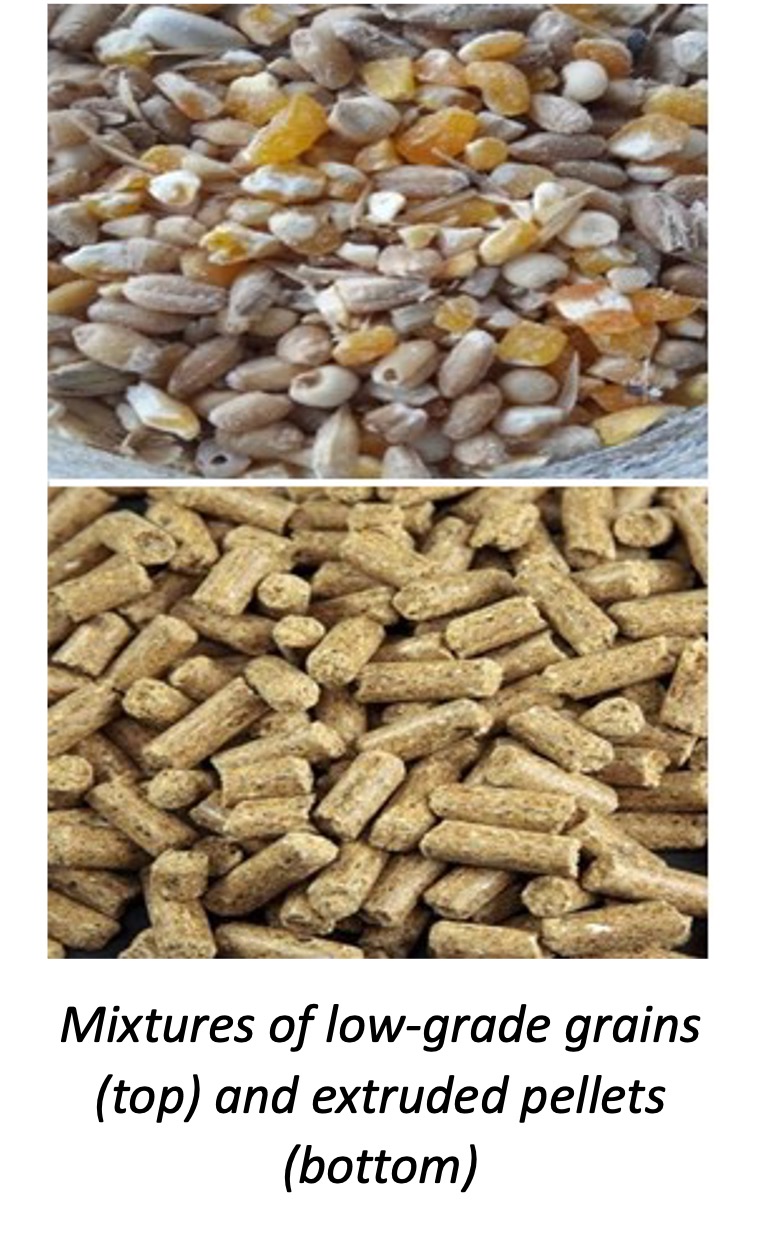Short-Term Fattening and Supplemental Feeding
Summary
Goat and sheep fattening results from intensive and nutritious feeding to promote fast growth and fat deposition, attaining desired carcass growth and quality. It maximizes the value of livestock across minimum time and space, approaching value addition to purchased stock as a business venture. It requires moderate investment and reduced labor, and has minimal risks; allowing peri-urban dwellers to become engaged in small ruminant value chains. Young adult animals are purchased and fattened to slaughter weight by limiting their movement and providing them a concentrated diet containing less roughage. This fattening is readily visible over a short period of time, resulting in quick profits and rapid turnover of stock. Selection of initial stock is extremely important, with some breeds known to adjust better to fattening conditions and diets. Males fatten more rapidly when castrated. Unhealthy animals fatten slowly, and once purchased animals are often treated for intestinal parasites. Goats and sheep may be fattened within three months. Despite a resemblance to "Cut-and-Carry" systems, many differences between the two approaches exist.
About the Solution
Goat and sheep fattening, sometimes referred to as “finishing”, involves intensive feeding of animals within feedlots to slaughter weight with adequate fat deposits. Its approaches are based upon established business models, recognizing that local and urban markets have high demand and are willing to pay higher prices for properly finished animals. Its approaches can reduce fattening intervals from as much as 18 months for grazed animals to only three months from properly selected and fed ones. In this way, finishing facilities are often located near livestock markets and slaughterhouses, and may conduct three rounds of fattening per year, often targeting their supply of fattened animals to festive seasons when demand and market prices are highest.
Fattening is conducted as a separate business venture in several countries including Burkina Faso, Ethiopia, Kenya, Mali, and Nigeria. Sales of fattened bucks and rams target the Eid-Mubarak festival among Muslim populations and the Easter and Christmas seasons in Christian areas.
Feed concentrates for small ruminants, sometimes called rations, are rich in energy and protein but low in fiber. The ingredients for making a balanced supplement feed include kernels of maize, sorghum, millet, and wheat as energy sources and soybean meal, cotton seed cake, fish meal, groundnut cake, or other oil seed meals as protein and oil sources. Minerals are provided as bone meal or calcium carbonate. Goats and sheep consume over 1% of their body weight as feed concentrate daily.
Initial selection of stock for fattening is critical; animals must be healthy and without physical defects. Chose animals with large skeletal frames as they have greater potential for gain. Among males, castration influences fattening and tastiness of meat. Some breeds have better potential for growth and fattening and adjust to fattening regimes more quickly. Avoid older animals (beyond four years old) as they are not suitable for fattening and select those at least 20 kg in weight. Avoid underfeeding and minimize movement. During the first two weeks of fattening, include grass and hay in diets, and then reduce their proportion over time. Where possible, sort animals based on weigh and gender, and raise them as groups. Some animals do not adjust to intensive feeding, and once identified cull them from the fattening stock as soon as possible. Each animal requires 15 to 20 linear centimeters of feed access. Shelters should be cleaned regularly minimize threats of pest and disease. All animals should be ear-tagged for identification, dewormed, and weighed weekly.
Commercialization
Commercially available
Solution Images
Institutions




